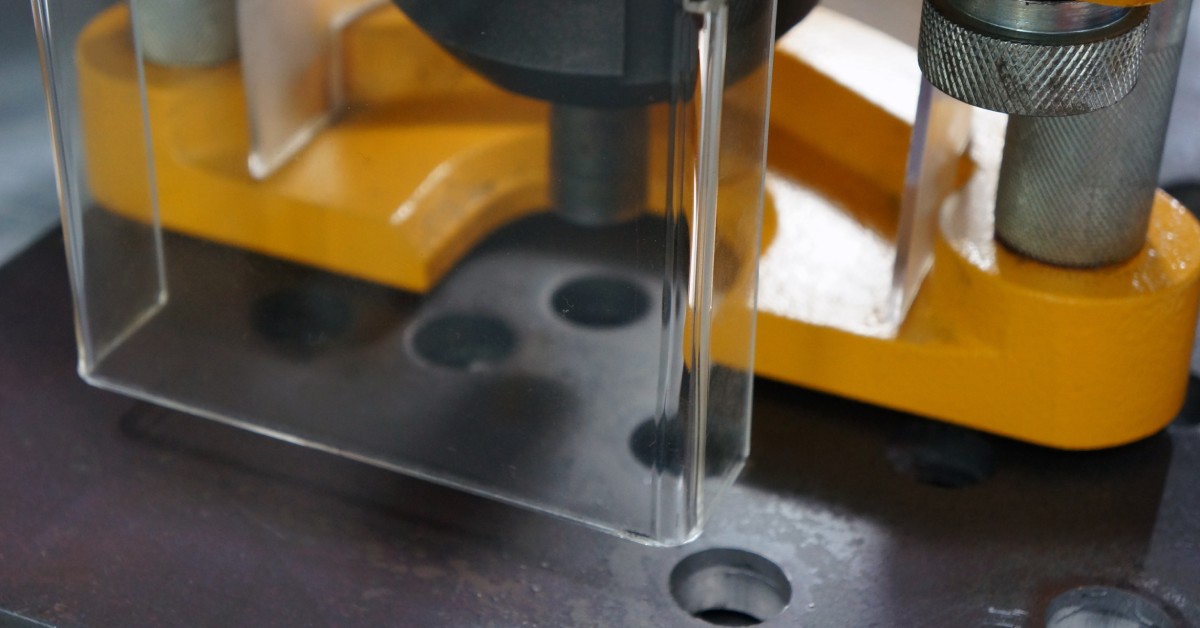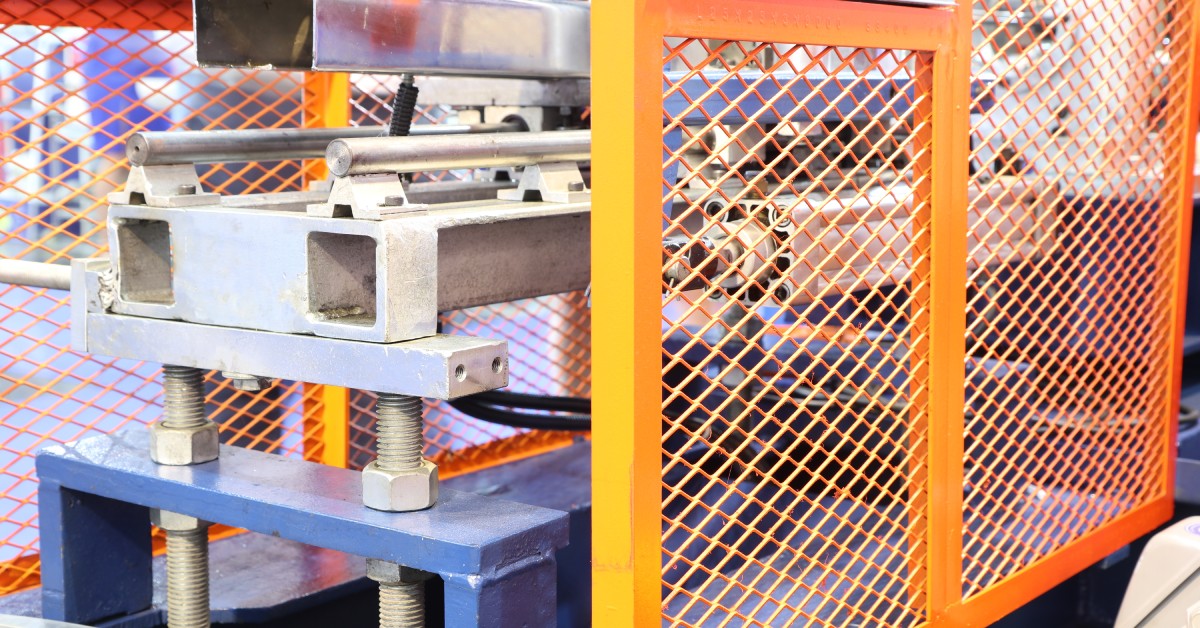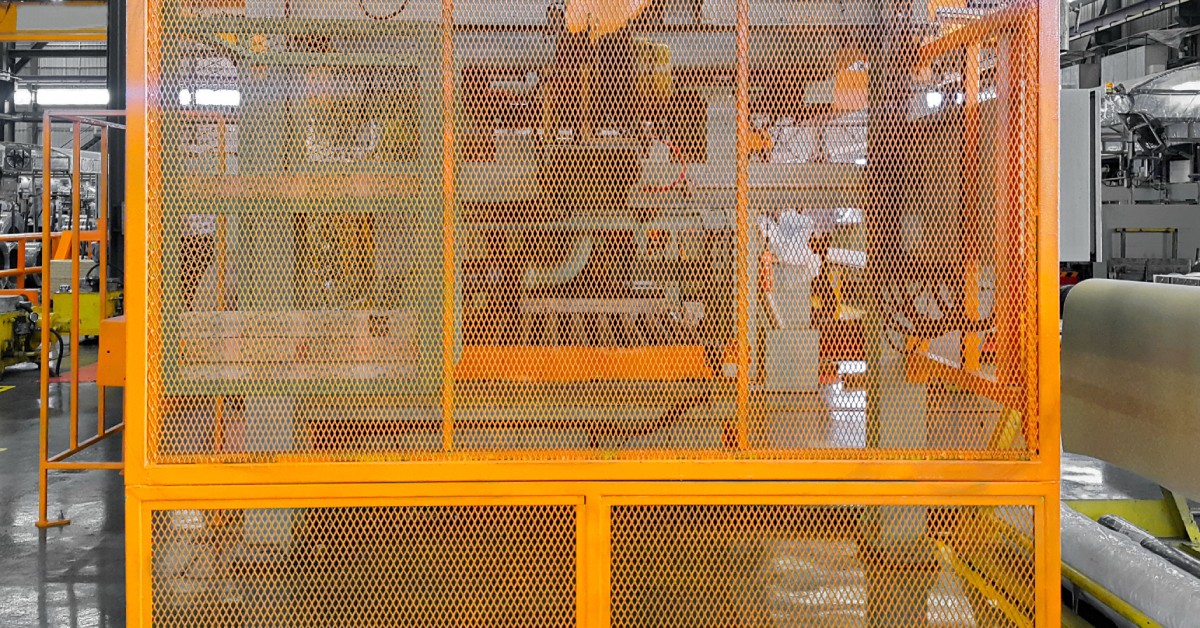
Manufacturing environments present a variety of hazards that can result in serious injuries, costly downtime, and regulatory violations. Therefore, machine guarding is an important component of maintaining safety in manufacturing.
Machine guarding encompasses physical barriers, safety devices, and protective systems designed to prevent worker contact with dangerous machine parts during operation. These systems protect workers from machinery that could cut, shear, or cause entanglement hazards during operation.
The Occupational Safety and Health Administration (OSHA) mandates specific machine guarding requirements, making compliance a legal obligation rather than an optional safety measure. Follow this guide to learn more about machine guarding and why it is important to every facility.
OSHA’s machine guarding standards require employers to protect workers from possible hazards during machine operations. These regulations specify that machines must have guards installed wherever exposed moving parts present injury risks to employees.
The standards apply to all mechanical power transmission apparatus, including belts, pulleys, shafts, and gears. Machine guarding requirements extend beyond basic barrier installations. Guards must prevent operators from reaching dangerous areas during operation, while still allowing for equipment maintenance and adjustments.
Compliance with the OSHA standards involves regular inspections, documentation, and guard maintenance to ensure continued effectiveness. Manufacturing facilities must establish protocols for guard inspection, replacement, and employee training to maintain regulatory compliance and workplace safety standards.
Machine guarding plays a critical role in ensuring the safety of workers in industrial environments. Different types of machine guards and safety devices are available, each designed to address specific hazards posed by machinery.
Fixed guards are a permanent barrier between workers and machine hazards. The welded or bolted barriers enclose the dangerous machine components and prevent workers from accessing them during operation.
These guards offer the maximum protection, but require a machine shutdown for maintenance access to the closed-off components. Manufacturers use fixed guards in conveyor drive systems, motor housings, and enclosed gear assemblies.
Adjustable guards can work in a variety of machinery while maintaining operator protection. These guards feature sliding panels, telescoping sections, or pivoting barriers that adjust to specific operational requirements. Operators can modify guard positioning for different jobs while maintaining safety coverage.
Manufacturing processes involving variable workpiece dimensions benefit from adjustable guard systems. These guards provide operational flexibility without compromising worker protection.

Machine guarding is a critical component of industrial safety, designed to protect operators from hazardous moving parts and other potential risks during equipment operation. Companies can ensure worker safety and maintain compliance with industry standards and regulations by implementing comprehensive guarding systems.
Properly implemented machine guarding significantly reduces workplace injuries related to mechanical hazards. According to the Bureau of Labor Statistics, machinery-related injuries account for approximately eight percent of all workplace injuries, many of which are preventable when companies prioritize effective guarding systems.
Comprehensive guarding programs protect workers from crushing, cutting, and entanglement injuries while reducing the severity of incidents that do occur. These protections translate directly into reduced workers’ compensation costs, medical expenses, and productivity losses associated with workplace injuries.
OSHA provides a variety of regulations surrounding machine guarding, and when businesses violate those rules, they can face costly fines and penalties. Citations for inadequate machine guarding can result in fines ranging from thousands to tens of thousands of dollars, depending on violation severity and employer history.
Maintaining compliance with these regulations reduces liability for workplace injury cases. Proper machine guarding demonstrates employer commitment to workplace safety and regulatory adherence, supporting legal defense positions when incidents occur.
Well-designed machine guarding systems enhance operational efficiency by providing clear safety protocols and reducing injury-related downtime. Guards that integrate seamlessly with production processes allow operators to work confidently while maintaining productivity levels.
Modern guarding systems incorporate quick-release mechanisms, easy access panels, and ergonomic designs that support efficient maintenance and setup procedures. These features minimize production interruptions while maintaining safety standards.
Insurance providers often offer premium reductions for facilities demonstrating comprehensive machine guarding programs. These reductions reflect lower risk profiles associated with effective safety measures and injury prevention programs.
Documented safety programs, regular inspections, and employee training records support insurance negotiations and demonstrate organizational commitment to risk management. These factors contribute to lower insurance costs and improved coverage terms.

Effective implementation of safety and operational programs is critical for sustaining long-term efficiency, compliance, and cost savings. By following structured strategies and leveraging proven methods, industrial operations managers can optimize workflows, enhance employee safety, and ensure regulatory adherence.
Comprehensive machine guarding begins with thorough hazard identification and risk assessment. Operations managers should evaluate each piece of equipment for potential injury sources, including rotating parts, reciprocating components, and material handling systems.
Risk assessments should consider operator tasks, maintenance requirements, and potential failure modes that could create additional hazards. This analysis provides the foundation for selecting appropriate guarding solutions and safety devices.
Effective machine guarding requires comprehensive employee training covering the purpose of guards, proper use, and maintenance requirements. Workers must understand why guards exist, how they function, and their responsibilities for maintaining guard effectiveness.
Training programs should address guard removal procedures, inspection requirements, and reporting protocols for damaged or missing guards. Regular refresher training ensures continued awareness and compliance with safety procedures.
Machine guard effectiveness requires regular inspection and maintenance to ensure continued protection. Inspection programs should include visual checks, functional testing, and documentation of guard condition and performance.
Inspection schedules should align with equipment maintenance cycles and operational requirements. Damaged or ineffective guards require immediate attention to prevent safety compromises and regulatory violations.
Operational managers who understand the importance of machine guarding in manufacturing know that these safety devices represent a critical investment in workplace safety, regulatory compliance, and operational sustainability. Facilities that implement comprehensive guarding programs protect their workforce while supporting long-term productivity and profitability goals.
Effective machine guarding requires systematic planning, proper implementation, and ongoing maintenance to achieve maximum benefits. Manufacturing operations create safer work environments while meeting regulatory requirements and operational objectives by prioritizing safety through comprehensive guarding systems.
A-line Automation is a premier supplier of custom machine guarding solutions that can keep your facility and workers safe. Our expert team tailors bespoke machine guards to meet the unique demands of your equipment. We offer a variety of materials and designs and work closely with our team to understand your needs and provide seamless solutions. Contact us today to learn more about our safe and efficient machine guarding options.